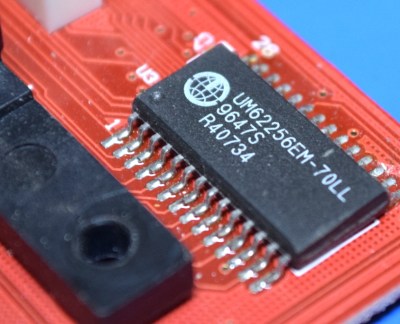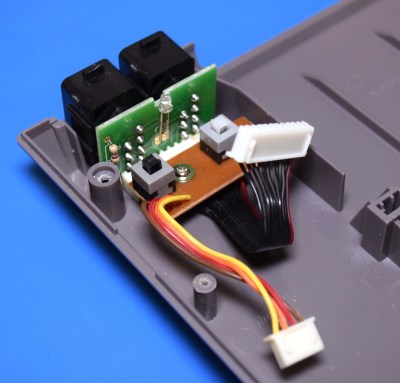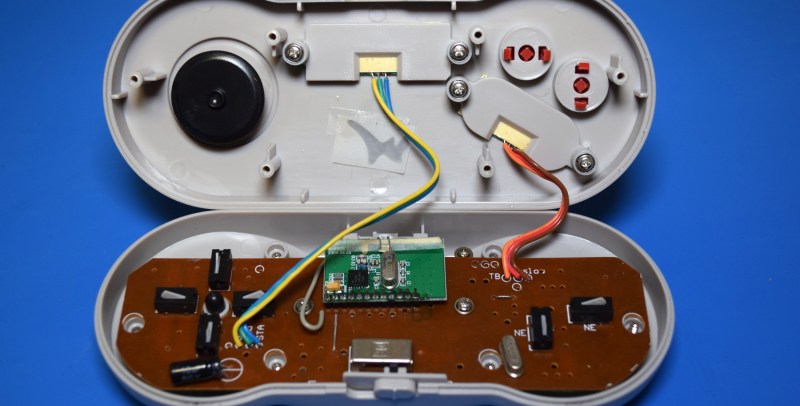Today if you wanted a little gadget to sit on your shelf and let you play classic games from the early console era, you’d likely reach for the Raspberry Pi. With slick emulator front-ends like RetroPie and DIY kits available on Amazon, you don’t even need to be a technical wizard or veteran penguin wrangler to set it up. If you can follow an online tutorial, you can easily cram the last few decades of gaming into a cheap and convenient package.
But things were a bit different back in 2005. There weren’t a lot of options for playing old games on the big screen, and what was out there tended to be less than ideal. You could hack an original Xbox or gut an old laptop to make an emulation box that could comfortably blend in with your DVD player, but that wasn’t exactly in everyone’s wheelhouse. Besides, what if you had the original cartridges and just wanted to play them on a slightly more modern system?

Enter Messiah, and their Generation NEX console. As you might have gathered from their ever-so-humble name, Messiah claimed their re-imagined version of the Nintendo Entertainment System would “Bring Gaming Back to Life” by playing the original cartridges with enhanced audio and visual clarity. It also featured integrated support for wireless controllers, which at the time was only just becoming the standard on contemporary consoles. According to the manufacturer, the Generation NEX used custom hardware based on the “NES algorithm” that offered nearly 100% game compatibility.
Unfortunately, the system was a complete bomb. Despite Messiah’s claims, the Generation NEX ended up being yet another “NES-on-a-chip” (NOAC) clone, and a pretty poor one at that. Reviewers at the time reported compatibility issues with many popular titles, despite the fact that they were listed as working on Messiah’s website. The touted audio and video improvements were nowhere to be found, and in fact many users claimed the original NES looked and sounded better in side-by-side comparisons.
It didn’t matter how slick the console looked or how convenient the wireless controllers were; if the games themselves didn’t play well, the system was doomed. Predictably the company folded not long after, leaving owners stuck with the over-priced and under-performing consoles. Realistically, most of them ended up in landfills. Today we’ll take a look inside a relatively rare survivor and see just what nostalgic gamers got for their money in 2005.
Revenge of the Blobs
Secure in the knowledge that the Generation NEX is just a fancy NOAC system, it comes as no surprise to see the dreaded black epoxy blobs on the PCB. This is standard operating procedure for these systems, and frankly, it would have been a bigger surprise if they hadn’t been there. But still, this is a particularly bad case of the Black Blob Syndrome with five of them visible as soon as the case is cracked open.
While the inside of the Generation NEX looks more or less like we’d expect, on closer inspection we can see a few differences that separate it from more modern NOAC systems we’ve explored recently.
Of course the main one is the lack of any onboard storage. The NEX only plays original NES and Famicom cartridges, and just like the original hardware doesn’t feature any sort of built-in menu system or dashboard that would require a flash chip for program storae. This might seem like something of a missed opportunity, but it’s a limitation of building an NES clone versus an emulator. The cartridge in these older machines isn’t a mass storage device, it’s a fundamental part of the circuit. Without it installed, the system simply doesn’t function.
 We can also see that the system’s RAM is external to the NOAC blobs. The original NES used twin 2 kB banks of memory, one for the CPU and the other for the Picture Processing Unit (PPU). But in the NEX they seem to have been replaced with a single UM62256EM-70LL SRAM chip. It’s not immediately clear why this component needed to remain an external device, but it’s probably safe to assume it was simply cheaper.
We can also see that the system’s RAM is external to the NOAC blobs. The original NES used twin 2 kB banks of memory, one for the CPU and the other for the Picture Processing Unit (PPU). But in the NEX they seem to have been replaced with a single UM62256EM-70LL SRAM chip. It’s not immediately clear why this component needed to remain an external device, but it’s probably safe to assume it was simply cheaper.
If we’re feeling particularly charitable, we could allow ourselves to believe that Messiah wanted the ability to upgrade the system’s memory on future production runs. Before the hardware was released, the company said they were actively looking into ways of offering enhanced performance for homebrew NES titles that were specifically programmed to take advantage of the NEX hardware.
Bolt-On Features
While the red PCB contains all of the standard NOAC hardware, the second green PCB appears to be home to all of the “secret sauce” features of the Generation NEX. Namely, the integrated receiver for the 2.4 GHz controllers and the stereo audio connectors. Given how different the design and construction of these two boards are, you have to wonder if Messiah didn’t contract the two components out to different companies.
Unfortunately, there’s almost nothing of interest to report on this board. Outside of the epoxy blobs, it’s just passive components. The nRF2401 receiver is on a separate module mounted to the reverse side of the PCB, but mounted in such a way that you can only see the bottom of it.
One thing worth mentioning is that the silkscreen is fairly well labeled. We can see what each pin does on the various connectors, which is nice if you were potentially looking to swap out the NOAC board with something more powerful while reusing the audio and video connectors on the back panel.
First Day with the New Iron
As the keen-eyed reader may have noticed in the previous pictures, some of the solder work on the Generation NEX is embarrassingly poor for a commercially produced device. Without question, it’s the worst to ever pass under our gaze over the course of this teardown series. Some of the components on the green PCB seem to be held on more by force of habit than anything, and the red PCB features a particularly heinous bodge wire installation. You really have to wonder what kind of QA these boards were actually going through if these ones got the stamp of approval.
In general, the build quality on the Generation NEX is rather poor. Which makes its high sticker price, at least compared to other clones of the day, even more insulting. The system reportedly had a very high failure rate, and with work like this going out the door, it’s not hard to see why.
Saving Grace
Messiah actually made wireless controllers for a number of classic systems before attempting to broaden their horizons into consoles, so it’s little surprise they rolled the capability to support them into the Generation NEX. It was also an easy way for them to increase profits, as the wireless controllers needed to be purchased separately and a pair cost as much as the console itself.
In any event, most people agreed that the wireless controllers were the best feature of the Generation NEX. That’s probably true, but it’s also more of a reflection on how poor the system itself is. While the controllers are serviceable, they don’t exactly impress either. The iconic directional pad has been replaced with an odd disc, and the Select and Start buttons take the form of capacitive pads for no discernible reason other than to make the controller look more futuristic.
Inside we can see that there’s nothing special about the disc input device, like the capacitive pads, it’s just for show. While it might be a bit subjective, it should also be said that the switches used in this controller are particularly unsatisfying to use as they make no noise and have very little resistance.
In the controller we get our first unobstructed view of the Nordic nRF2401 radio module. It probably wouldn’t be very difficult to put together a modern receiver you could use these controllers with emulators, but it’s hard to imagine why you’d want to.
What’s on the other side of the PCB? Another black epoxy blob and a handful of passives. You’re probably getting just as sick of seeing that as I was at this point, so I didn’t even bother to take a picture of it. Instead, let’s take a moment to marvel at that SMD LED soldered to stiff wire with a bit of masking tape to keep it from shorting out on the antenna of the nRF2401.
The True Messiah

Looking at the internals of the Generation NEX just confirmed what was already known. The system was over-hyped and despite its premium sticker price, built as cheaply as possible. Perhaps Messiah had the best of intentions, but the reality is that they were simply out of their league with a project like this.
But in the end, the Generation NEX can still help bring those old games back to life. While the system as a whole might have been a disappointment, there’s little argument that Messiah nailed the look of a re-imagined NES. If there’s ever been a gadget that deserved to have its internals ripped out and replaced with a Raspberry Pi, this is it.
If you can score one of these cheap enough on eBay, just imagine it’s a kit and toss everything but the case, controller ports, and power button. That’s certainly what I plan to do with this one. With RetroPie onboard, the resurrection is nigh.























62256 is a 32KB RAM, not 4KB. Not that I have any idea what it’s doing there.
I think it’s sitting there going “Hey look at me, in 2005 I was cheaper and easier to source than 2x2K or one 4k”
Just a Silly W.A.G. on my part,
but what if they decided to use two different board houses (in China?) to keep clones from hitting the shelves before theirs did?
Or the red board was an off-the-shelf part / something they got from some other failed venture, and they added the controller module and some plastic…
Usually an off the shelf part. Or at least used across many similar products.
I’ll frequently find boards dated nearly a decade earlier than the machine I’m looking at.
Bet it doesn’t even have all the pins routed to save on copper lol.
Matthew 24:24 For false messiahs and false prophets will appear and perform great signs and wonders…
or in this case maybe not.
Well, I guess I don’t need to make the false messiah comment anymore. Plus you said it better anyway.
Ugh. Those gamepad switches look so soft and mushy.
What even are they? I don’t think I’ve ever seen PCB mount switches like that before.
I’ve seen similar ones before, but they’ve been used in position detection of some kind of mechanical thingamajig, and not as a direct input like in this controller.
There are switches like that in printers for use as paper-feed detectors, for instance. Imagine a sheet of paper gliding up over that triangle bit.
I just dug mine out of storage. Tried to use it. I think I broke it slamming the game in too hard. Any good alternatives out there that you like?